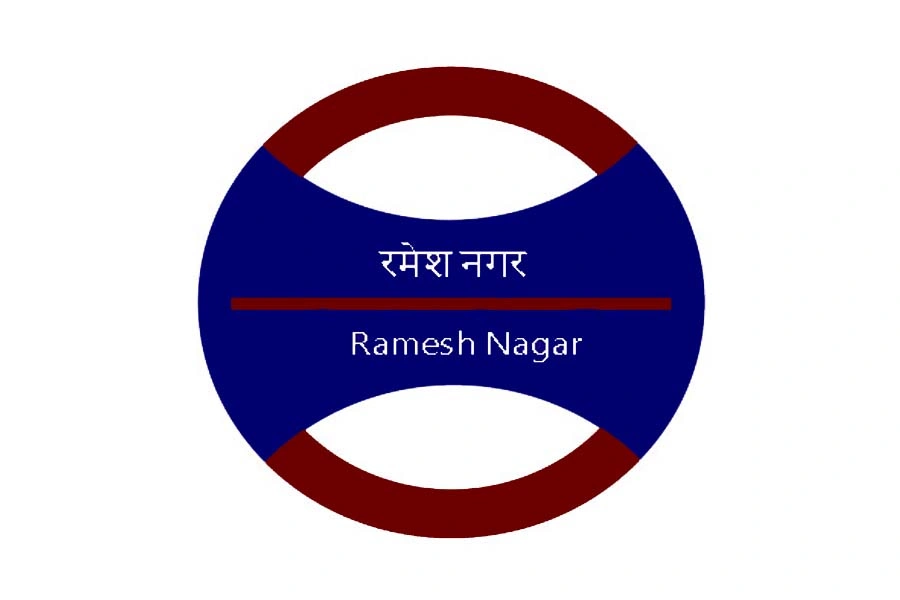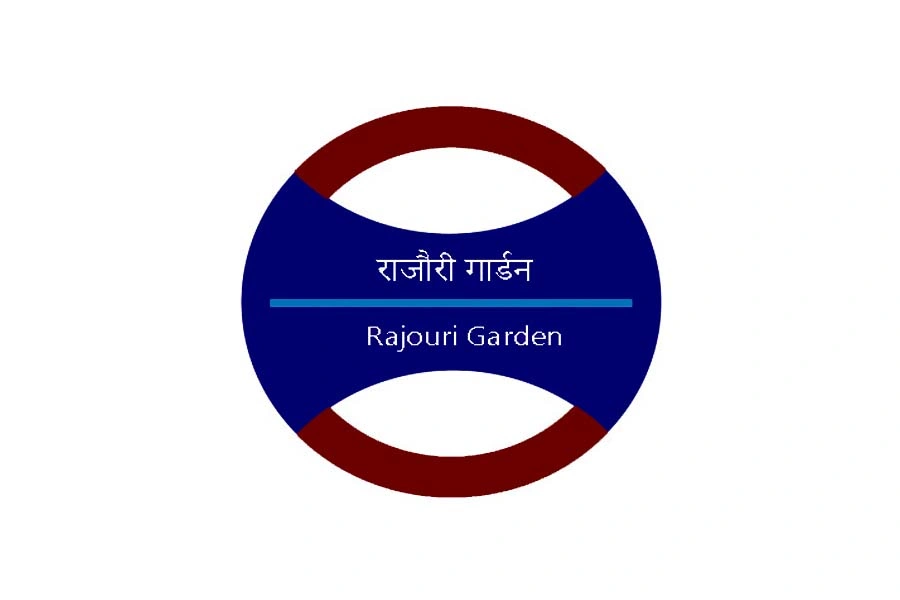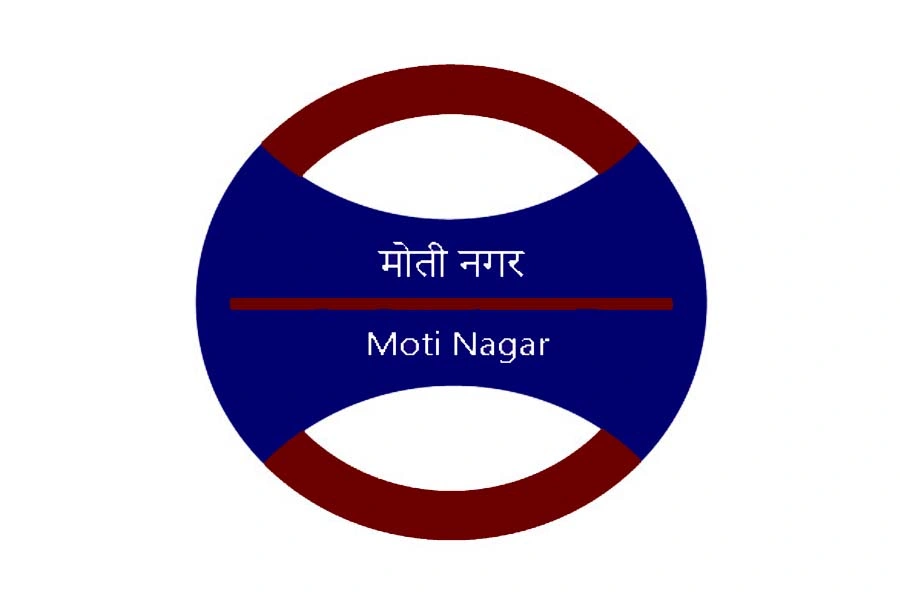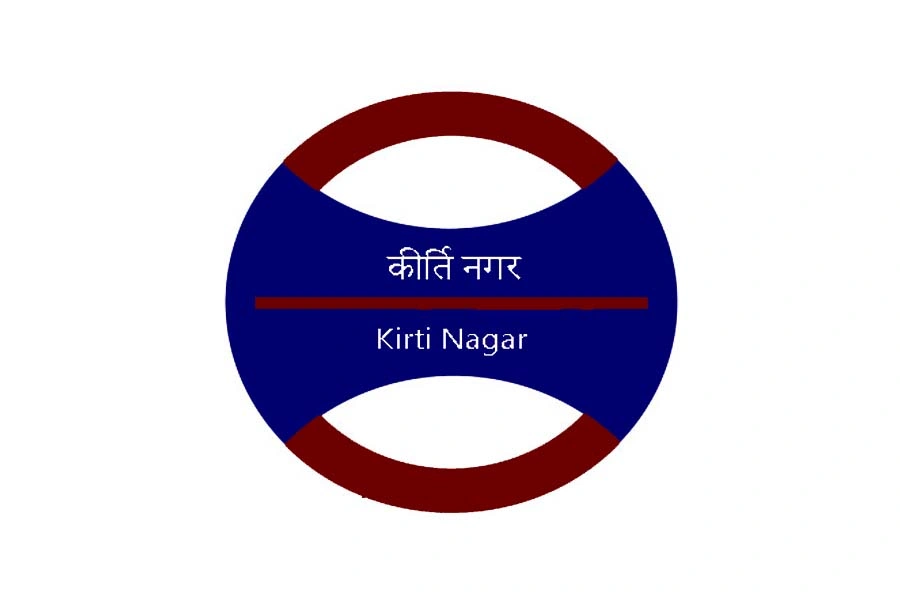
Ramesh Nagar Metro Station, A key gateway on the Blue Line with easy access, essential facilities, and excellent connectivity across Delhi. The Delhi Metro network, renowned for its efficiency and extensive reach, is a lifeline for millions of commuters in the capital city. Among the many stations that dot this vast network is Ramesh Nagar Metro Station. Located on the Blue Line of the Delhi Metro, this station may not be as prominent as some of the others, but it serves as a crucial hub for residents and visitors alike. Whether you’re a daily commuter or a first-time visitor, this blog will serve as your ultimate guide to Ramesh Nagar Metro Station.
We’ll delve into its history, significance, and connectivity while providing a step-by-step guide to help you navigate the station with ease.
The Significance of Ramesh Nagar Metro Station
Ramesh Nagar, a bustling neighborhood in West Delhi, has seen significant growth over the years. The area, once known for its residential colonies, has transformed into a vibrant mix of residential and commercial spaces. The metro station, situated in the heart of Ramesh Nagar, plays a pivotal role in connecting this area to the rest of the city. For many locals, the station is more than just a transit point; it’s a gateway to the wider world, offering seamless connectivity to various parts of Delhi and beyond.
Gates and Facilities at Ramesh Nagar Metro Station
Ramesh Nagar Metro Station, though relatively modest in size compared to some of the more expansive stations in the Delhi Metro network, is equipped with essential facilities to ensure a smooth and convenient experience for commuters. Understanding the layout of the gates and the facilities available can greatly enhance your experience at the station.
Gate Layout and Access Points of Ramesh Nagar Metro Station
Ramesh Nagar Metro Station has multiple entry and exit gates, strategically located to provide easy access to different parts of the surrounding area. Each gate is designed to cater to the needs of commuters, whether they are heading to nearby residential areas, commercial hubs, or other local amenities. Here’s a breakdown of the gates and what you can expect at each one:
- Gate 1:
- Location: This gate is positioned on the northern side of the station, providing access to the main road and nearby residential colonies.
- Facilities:
- Escalator and Stair Access: Gate 1 is equipped with both escalators and stairs, ensuring accessibility for all commuters.
- Rickshaw and Auto Stand: Just outside the gate, you’ll find a rickshaw and auto stand, making it easy to continue your journey by road.
- Basic Amenities: There are small kiosks near the gate selling newspapers, snacks, and drinks, which are handy for commuters on the go.
- Gate 2:
- Location: Located on the southern side, Gate 2 offers easy access to the commercial areas and shops that line the main street.
- Facilities:
- Elevator Access: Gate 2 is equipped with an elevator, making it accessible for elderly passengers, people with disabilities, and those carrying heavy luggage.
- ATM: There is an ATM near this gate, providing easy access to banking services.
- Public Toilets: Clean and well-maintained public toilets are available near the entrance, ensuring convenience for travelers.
- Gate 3:
- Location: This gate is situated towards the western side, closer to several office complexes and educational institutions.
- Facilities:
- Parking Area: Gate 3 has an adjoining parking lot, which is useful for commuters who prefer to drive to the station and then take the metro.
- Bicycle Stand: For eco-friendly travelers, there is a bicycle stand where you can securely park your bike before heading into the station.
- Water and Vending Machines: Near the entrance, you’ll find water coolers and vending machines offering snacks and beverages.
- Gate 4:
- Location: Positioned on the eastern side, this gate is closest to local markets and street vendors.
- Facilities:
- Street Food Stalls: Just outside Gate 4, there are several street food vendors offering a variety of snacks, perfect for a quick bite before or after your journey.
- Prepaid Auto Booth: This gate has a prepaid auto booth, allowing you to book an auto-rickshaw at a fixed fare, which is especially useful for those unfamiliar with the area.
Additional Facilities Inside Ramesh Nagar Metro Station
Aside from the gate-specific facilities, Ramesh Nagar Metro Station also offers a range of amenities designed to enhance the overall commuting experience:
- Customer Care Center: Located near the ticket counters, the customer care center is staffed with friendly personnel ready to assist with any queries, lost items, or information regarding metro routes.
- First Aid Room: The station has a first aid room equipped to handle minor medical emergencies. In case of any health issues, you can approach the station staff for assistance.
- CCTV Surveillance: For safety and security, the entire station is under constant CCTV surveillance. This ensures that the station remains secure and that any incidents are promptly addressed.
- Signage and Maps: Clear signage and metro route maps are displayed throughout the station, making it easy for passengers to navigate and plan their journeys.
- Wi-Fi Access: Free Wi-Fi is available within the station premises, allowing you to stay connected while you wait for your train.
- Seating Areas: There are designated seating areas on the platform, providing a place to rest, especially during off-peak hours when trains may not arrive as frequently.
- Accessibility Features: In addition to elevators and escalators, the station is equipped with tactile paths for the visually impaired, ensuring that it is accessible to all commuters.
Understanding the gate layout and the facilities available at Ramesh Nagar Metro Station can greatly enhance your commuting experience. Whether you’re in need of quick access to a rickshaw, a place to park your bike, or just a convenient snack on the go, this station is well-equipped to meet the needs of all its passengers.
A Walk Through Ramesh Nagar Metro Station
Upon arriving at Ramesh Nagar Metro Station, the first thing you’ll notice is its straightforward design. Unlike some of the more elaborate stations on the network, Ramesh Nagar is designed with functionality in mind. The station has two levels: the street level, where you’ll find the entrance and ticket counters, and the platform level, where trains arrive and depart.
Ticketing and Security: The ticketing area is equipped with multiple counters, ensuring that passengers don’t have to wait long to purchase a ticket or recharge their smart cards. Like all metro stations, Ramesh Nagar has a stringent security setup. You’ll pass through a metal detector, and your belongings will be scanned by an X-ray machine. The security personnel are always vigilant, ensuring the safety of all passengers.
Platform Level: After clearing security, you’ll head up to the platform level. The station has two platforms, each serving trains in different directions on the Blue Line. The platforms are well-maintained, with clear signage indicating the direction of the trains and their final destinations.
Step-by-Step Guide: Navigating Ramesh Nagar Metro Station
Navigating Ramesh Nagar Metro Station is relatively straightforward, but for first-time visitors, a step-by-step guide can be incredibly helpful.
Step 1: Entering the Station
As you approach the station from the street, you’ll find the entrance clearly marked. If you’re arriving by foot, simply walk up to the entrance. If you’re coming by vehicle, there’s a designated drop-off area near the entrance.
Step 2: Ticketing
Once inside, head to the ticket counters. If you already have a smart card, you can skip this step and proceed directly to the security check. If you need to purchase a token or recharge your card, there are several counters available. Additionally, there are automated ticket vending machines for those who prefer a quicker, contactless experience.
Step 3: Security Check
After obtaining your ticket or recharging your card, proceed to the security check. Once your possessions are scanned on the conveyor line, proceed through the metal detector. Security personnel may ask you to undergo a brief manual check if necessary.
Step 4: Accessing the Platform
Once you’ve cleared security, use the escalator or stairs to reach the platform level. Pay attention to the signage, which will guide you to the correct platform based on your destination. The Blue Line runs in two directions: towards Noida Electronic City and towards Dwarka Sector 21.
Step 5: Boarding the Train
When the train arrives, wait to board until all passengers have disembarked. The doors will open automatically, and you can step inside. During peak hours, the trains can get crowded, so be prepared for a bit of a squeeze.
Step 6: Exiting the Station
Upon reaching your destination, follow the exit signs to leave the station. If Ramesh Nagar is your final stop, simply exit through the designated gates. If you need to transfer to another line or mode of transport, there are clear directions to help you make the switch.
Connectivity: Where Can You Go from Ramesh Nagar Metro Station?
One of the biggest advantages of the Delhi Metro is its extensive connectivity, and Ramesh Nagar is no exception. As part of the Blue Line, Ramesh Nagar Metro Station offers direct access to several key locations across Delhi and even into neighboring regions. Here’s a list of major stations you can reach from Ramesh Nagar, along with approximate travel times:
- Rajouri Garden (5 minutes): A major shopping and entertainment hub in West Delhi, Rajouri Garden is just one stop away from Ramesh Nagar. Whether you’re in the mood for some retail therapy or want to catch a movie, this station is your gateway.
- Karol Bagh (12 minutes): Famous for its bustling market, Karol Bagh is a popular destination for those looking to shop for traditional Indian attire, electronics, and more. The market is within a short metro trip from Ramesh Nagar.
- Rajiv Chowk (20 minutes): Located in the heart of Delhi, Rajiv Chowk is one of the busiest metro stations on the network. It serves as an interchange between the Blue Line and the Yellow Line, making it a crucial hub for travelers heading to various parts of the city.
- Barakhamba Road (22 minutes): Situated in the commercial district of Connaught Place, Barakhamba Road is another key stop for those working in or visiting the area. The station provides easy access to numerous offices, restaurants, and shops.
- Mandi House (24 minutes): This station is a cultural hub, with proximity to several theaters, museums, and art galleries. It’s a must-visit for those interested in Delhi’s rich cultural scene.
- Noida Sector 18 (40 minutes): If you’re heading to Noida, one of the fastest-growing cities in the National Capital Region (NCR), Noida Sector 18 is a key station. It’s close to several malls, offices, and recreational spots.
- Dwarka Sector 21 (35 minutes): Located in the southwestern part of Delhi, Dwarka Sector 21 is the final stop on the Blue Line in this direction. It’s an important station for those living or working in the Dwarka area.
- Yamuna Bank (30 minutes): The Blue Line and the Yamuna Bank branch line, which travels to Vaishali, meet at this station. For those going to Delhi’s eastern regions and beyond, it’s an essential connection.
- Anand Vihar ISBT (45 minutes): This station provides access to the Anand Vihar Inter State Bus Terminal (ISBT), a major bus terminal for travelers heading to various parts of North India.
- Vaishali (50 minutes): If you’re heading to Ghaziabad, Vaishali is the final stop on the Blue Line’s branch line. It’s a busy residential and business district with a blend of contemporary conveniences and conventional marketplaces.
The Local Flavor: Exploring the Area Around Ramesh Nagar Metro Station
While the metro station itself is a functional and straightforward space, the area around Ramesh Nagar offers a unique blend of old-world charm and modern convenience. As you step out of the station, you’re greeted by a lively neighborhood that’s quintessentially Delhi. Small shops line the streets, selling everything from groceries to clothing. Street food vendors offer a taste of Delhi’s famous snacks, from spicy chaat to crispy pakoras.
A short walk from the station will take you to several residential colonies, each with its own distinct character. The area is predominantly residential, with a mix of old houses and new apartment complexes. Despite its urban setting, Ramesh Nagar retains a sense of community, where neighbors know each other, and life moves at a slightly slower pace compared to the more commercial parts of the city.
For those interested in exploring the area further, Ramesh Nagar offers easy access to nearby attractions. Rajouri Garden, just one stop away, is a popular destination for shopping and entertainment. If you’re in the mood for some cultural exploration, Mandi House and its surrounding theaters are just a short metro ride away.
Reviews: What Commuters Say About Ramesh Nagar Metro Station
No guide would be complete without hearing from the people who use the station every day. Here’s what some commuters have to say about their experience at Ramesh Nagar Metro Station:
Rajesh K. – “My everyday destination is the Ramesh Nagar Metro Station, and I’m thrilled with the ease it provides. The station is clean, the staff is friendly, and I’ve never had any issues with the trains being on time. It’s also great that the station is so close to my home.”
Meera S. – “I adore how simple Ramesh Nagar Metro Station is to use. Even during peak hours, the crowd is manageable, and the trains run frequently. The only downside is that there aren’t many food options inside the station, but the street vendors outside more than make up for it!”
Arjun T. – “Ramesh Nagar Metro Station is a godsend for someone who commutes around Delhi on business trips. The connectivity is excellent, and I can get to almost any part of the city without much hassle. The only suggestion I have is to improve the seating arrangements on the platform.”
Pooja R. – “I recently moved to Ramesh Nagar, and the metro station has been a lifesaver. It’s well-maintained, and the staff is always ready to help if you have any questions. I’ve also noticed that the station is wheelchair accessible, which is great for people with mobility issues.”
Conclusion of Ramesh Nagar Metro Station
Ramesh Nagar Metro Station may not be one of the largest or most famous stations on the Delhi Metro network, but it’s undoubtedly one of the most important for those who live and work in the area. With its excellent connectivity, straightforward design, and close proximity to key destinations, it serves as a vital link in the daily lives of countless commuters.
Whether you’re a local resident or just passing through, Ramesh Nagar Metro Station offers a convenient and efficient way to navigate the city. So the next time you find yourself in West Delhi, don’t forget to explore this hidden gem of the Delhi Metro network.



